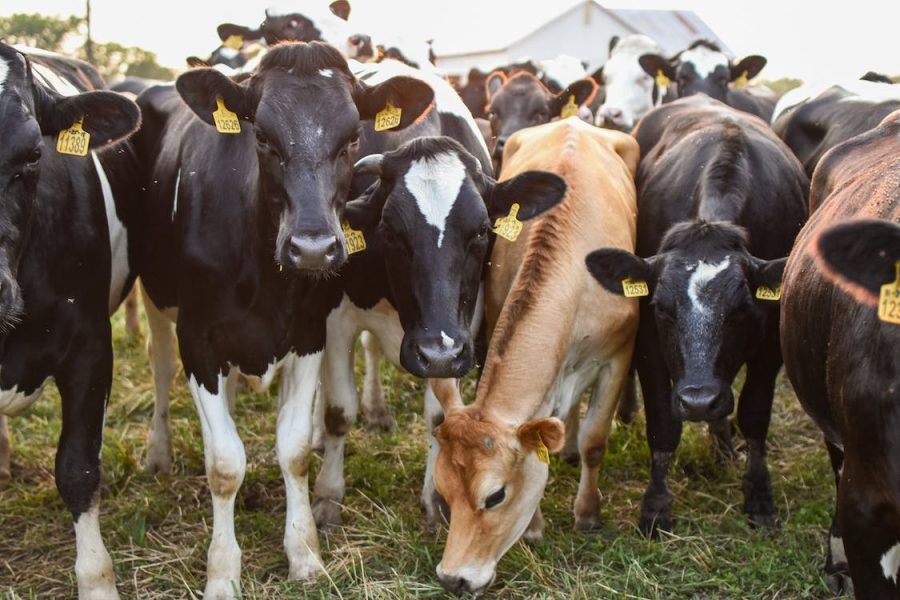Photo by Julissa Helmuth from Pexels
Both animals and humans alike are being harmed by the cattle industry. The cattle industry prioritizes people over animals and profits on the exploitation of these animals.
Factory-farmed cows
Throughout the years, I’ve touched on various topics concerning all things vegan, but what I haven’t explored as much is animal welfare and agriculture. I want to preface this by saying, I feel I can’t speak on this topic without involving my emotions, so I won’t attempt to. I understand these facts can be disturbing and provoke intense feelings in some. There’s nothing wrong with that. None of the articles I write are meant to judge or shame anyone for their personal decisions. Vegan View is an educational source for those who seek it and a supportive platform for all.
Recognizing the instinctive nature of cows is the first step to understanding cattle farming. The nomadic animals graze on plants and flower fields, they protect their offspring, and form lifelong bonds with family and friends. Mothers typically give birth once a year and produce one gallon of milk everyday. But all of these normal occurrences are stunted or prohibited in the factory farming industry.
Factory farming is an intense agricultural practice that provides almost all animal products in the U.S. Also known as Concentrated Animal Feeding Operations (CAFOs), they maximize their profit by buying cheap feed, confining the cows in enclosed spaces, and keeping them from carrying out their natural behaviors.
The dairy industry artificially inseminates mother cows so that they can produce more milk, because without a calf, there can be no milk. The calves are removed after birth; if the calf is female, she will be put on a cycle of impregnation, birthing, and milking around 14 months old, but if the calf is male, he will most likely be killed or sent to a veal factory. Big Agriculture has legs in all sectors of factory farming, including beef raising.
These locations house the cows in small plastic crates enclosed by tight metal fencing, so small that they can’t jump, run, or even walk. The purpose of this is to keep their muscles from developing, which affects the taste of the meat. They are bred to grow faster so they can be killed sooner, saving their handlers money. They spend about a year on rangeland, then are transported to various feedlots -closely confined pens that force them to stand in their own excrement- then lastly to their death. Cows penned up inside are treated more like machines than actual living beings.
As mentioned earlier on, they are prevented from grazing and don’t have that accompanied mental stimulation, and they are forced to stand or lie down because it’s too crowded. They have long and sometimes violent experiences on transportation, facing extreme weather conditions and lack of food or water. Dairy cows are considered ‘spent’ after 4-6 years, though they would usually live to be 20 in nature. This is due to their inhumane treatment through harmful farming practices, which have become increasingly normalized.
The animals aren’t the only ones being harmed. Human wellness and environmental health is heavily impacted by this industry. Livestock produces 14.5% of all human caused greenhouse gas emissions, 39% of which is made up of the methane from cattle, and 10% is from their manure storage. These methods also foster other pollutants that have negative effects on the surrounding communities. In fact, the manure kept in lagoons gets used as fertilizer for nearby crops, which would normally be a positive thing. However, the plants can’t absorb all of the nutrients, so through runoff it enters surface waters and percolates into groundwater. It also takes billions of gallons of water a year to raise cattle, and while the pasture raising method produces less emissions and seems more ethical in some eyes, it takes up more land that could be used for growing other crops to feed people. Humans don’t need milk to grow healthy and strong, 36% of Americans can’t properly digest it. The “Got Milk?” campaign perpetuated this idea in order to get rid of excess. It seems to be a common theme that profit takes priority over people or animals.
Luckily, there are more dairy and meat alternatives hitting the shelves every day. The demand for these products are skyrocketing as people become more educated about the respective industries. The time to act is now. Calling attention to these deeply-rooted issues backed by a material, and often political, agendas. If you feel strongly about this topic, I encourage everyone to evaluate their personal animal-product consumption. If you want to make a bigger difference, we can make our voices heard by contacting local officials, taking a stand, and showing that we won’t accept these practices anymore. Together we can fix this broken industry that profits off the exploitation of cows and calves.
